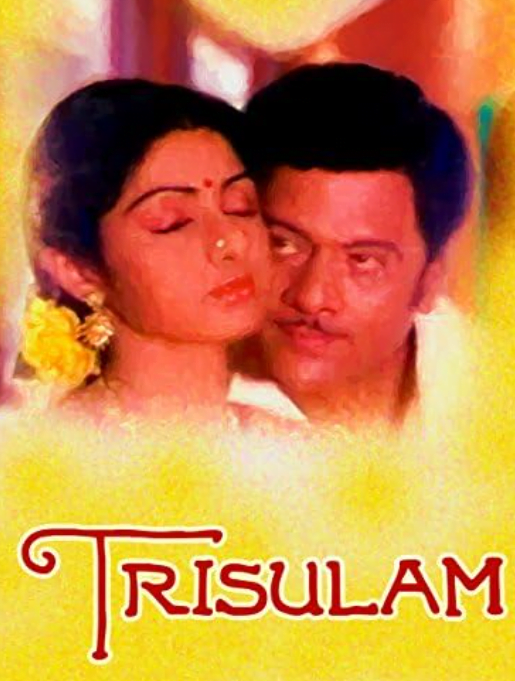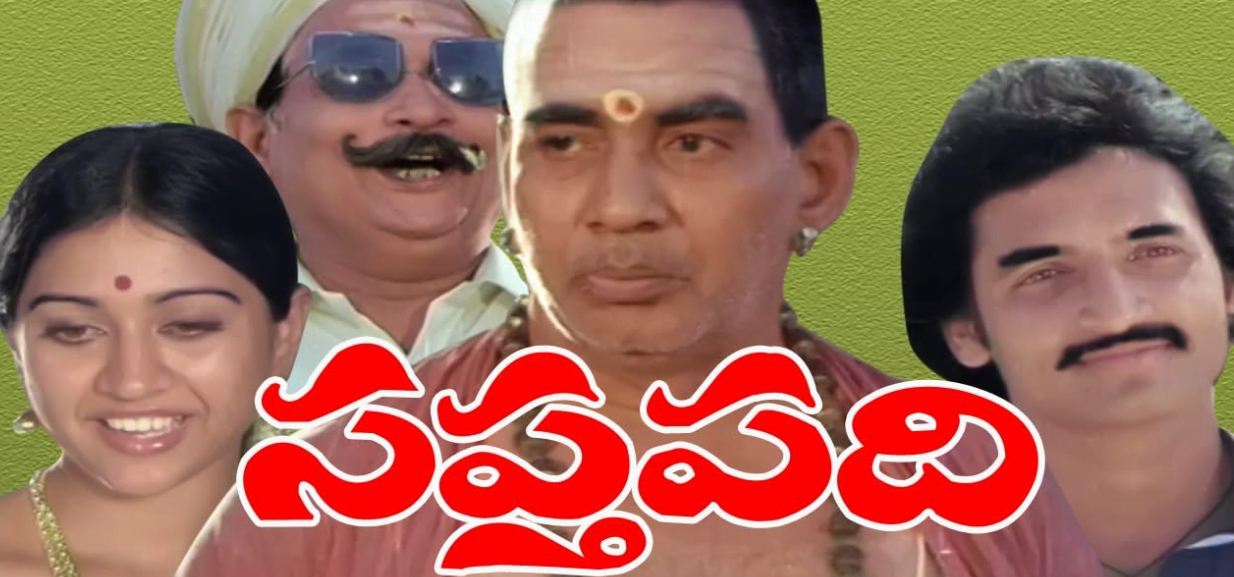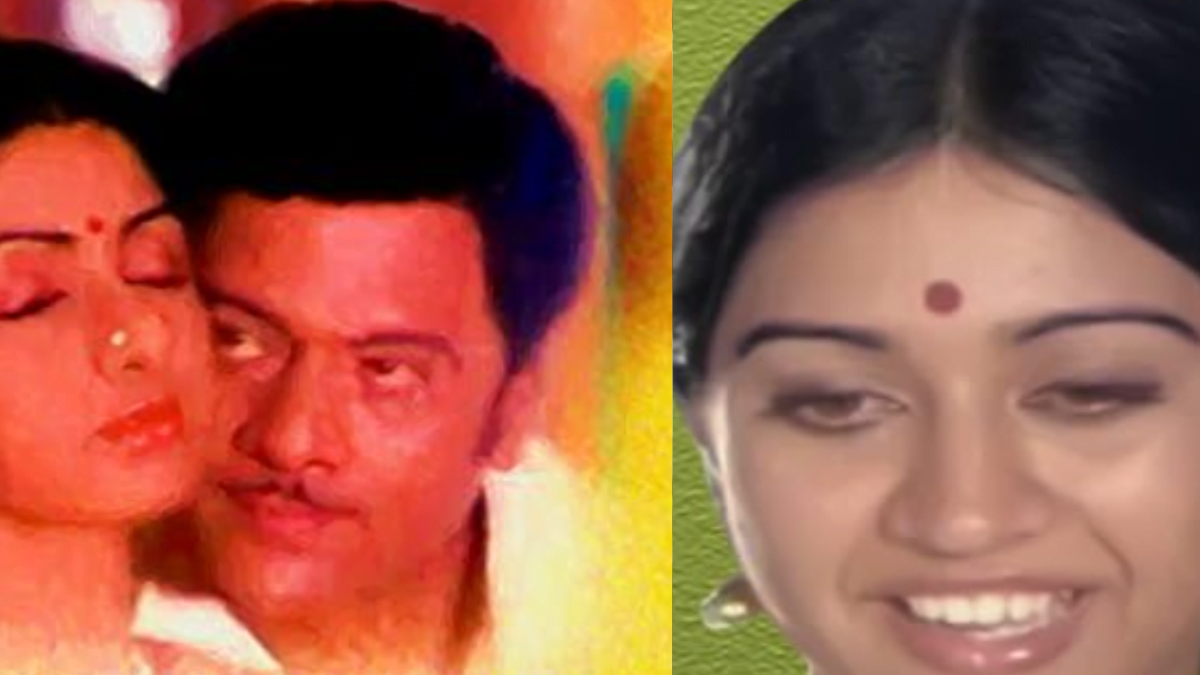The Telugu cinema of the 1980s was often criticised for being overtly formulaic, focusing on sex and violence, to woo the audience to the theatre, a trend Bollywood captured in the countless remakes of Telugu films in the 1980s. A closer look at these films shows that Telugu cinema often used the issues of caste, class and gender conflicts to aid their narrative, which gave some depth to the narrative, even though these films hardly scratched the surface beyond the level permissible in commercial cinema.
The films under our consideration, Trishulam and Saptapadi, are two such films, which dealt with the question of caste and gender in the Telugu society, without compromising on its commercial appeal. In both these films, the lowered-caste protagonists are shown as sacrificing, righteous and virtuous, whereas the upper castes feature both as protagonists and antagonists.
Trishulam: caste-based violence
Trishulam was based on the novel Jagriti and was remade in Hindi with the title “Naya Kadam” in 1984. Trishulam deals with the ability of a lowered caste man to empower and emancipate his society from the clutches of socioeconomic oppression. Here, the oppressors are two upper-caste men who control the whole village with an iron hand and are shown as unabashed admirers of Hitler. The trope of sacrificing lowered caste protagonists comes from the two women in the film. Both women are sexually abused (one of them twice) by the upper caste men, and eventually lose their lives, orchestrating the circle of violence, where the lowered caste man chooses to end the tyranny of the upper caste men of the village.

Lowered caste women in Telugu cinema are often shown as victims of abuse, and the rallying point for the protagonists to go on a rampage, and Trishulam is an example of that. Interestingly, even the upper caste woman in this film is not free from abuse, even though she acts as an enabler for the lowered caste man. In one of the scenes of the film, the villain throws the glass into the river, because it was touched by the lowered caste protagonist. In retaliation, the man kisses the daughter of the upper caste villain and challenges him to throw his daughter into the river as well, as she is also touched by a lowered caste man. This problematic juxtaposition of an object with women, and the use of women for titillation is a feature that plagues this film.
Finally, the film deals with the opportunism of the politicians to take advantage of the caste issue for their benefit. When the upper caste antagonist realised that he may not get votes in the next elections due to the efforts of the protagonist and growing awareness among the marginalised sections of society, he decided to get his daughter married to the protagonist despite the caste difference. Even though the protagonist is happy to marry the upper caste girl, he is coerced to marry a girl of his community, as the villagers see the union as an act of debauchery on the part of the protagonist to his community, wherein the protagonist is prioritising his interest over the upliftment of his community. Eventually, the film ends with the union of the lowered caste man with the upper-caste girl, due to the sacrifice of the other two lowered caste girls, both sexually, emotionally and eventually mortally.
Saptapadi: challenging the caste-based hegemony
The other film Saptapadi is comparatively inward-looking and introspective, wherein the rupture in the discourse of caste was led by the upper caste men, and the lowered caste man was a passive receiver of the benevolence of the upper caste. Saptapadi is a love story in its essence featuring an upper caste man who is firm in his faith about the sanctity of social rules and rituals; an upper caste woman who is reluctant to commit her love to a lowered caste man as she needs social acceptance from her grandfather; and a lowered caste man, who has accepted his tragic fate as a lowered caste man. After a point, the woman also submits to her fate and decides to get married to the upper caste man to please her grandfather as she and her lowered caste lover lack the courage to challenge the social order.

In that context, the conflict arises because of a divine intervention, which unearths the scandal in the public. Until this point, the only person who acts as the voice of reason in the film is the younger son of the grandfather, who challenges the redundancy of the rituals and instead asks his students to learn things that are up to date with modern times and can be useful for an illustrious career. His ideas receive ridicule and humiliation throughout the film. Even when the upper caste protagonist relents and questions the rigidity of caste-based norms; it is not accepted by the society at large, which is ready to attack the lowered caste man for his moral transgression.
Here, the lowered caste man is devoid of community support, he is unprivileged because of his caste, and he is an outsider to the village. It requires the upper caste man to act as a saviour for him to reconcile him with the upper caste woman. Interestingly, when Saptapadi was remade in Hindi as Jaag Utha Insan, the ending was changed to include a tragic end where the orthodox members of the society don’t approve of the union between a lowered caste man and upper caste woman and kill the lowered caste man in broad daylight.
Saptapadi ends on a positive note that society is capable of shrugging off its age-old beliefs and adapting according to the changing times. For its positive message of social unity, the film was awarded the National Award for Best Film on National Integration. The Hindi version, on the other hand, ends with a passionate speech by the upper caste protagonist questioning the caste-based violence in the society and the need of the society to introspect upon their caste prejudices.
Telugu cinema in the 1980s was a period of crisis artistically with most of the films catering to the lowest common denominator with frivolous themes and exaggerated portrayal. It is difficult to find nuanced projections of caste issues within the mould of commercial cinema, but Trishulam and Saptapadi offered a discourse on the question of caste-gender intersectionality.
Even though these films were not exemplary in terms of their treatment of the caste issue, they provided important interventions not just in terms of caste conflict and the hegemony of the upper caste as well as the retaliation by the lowered caste. The films also underline the passive position of women in the issue of caste, where they come across as the victims of violence or just passive receivers of male endowments.




